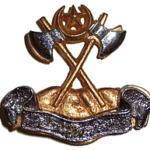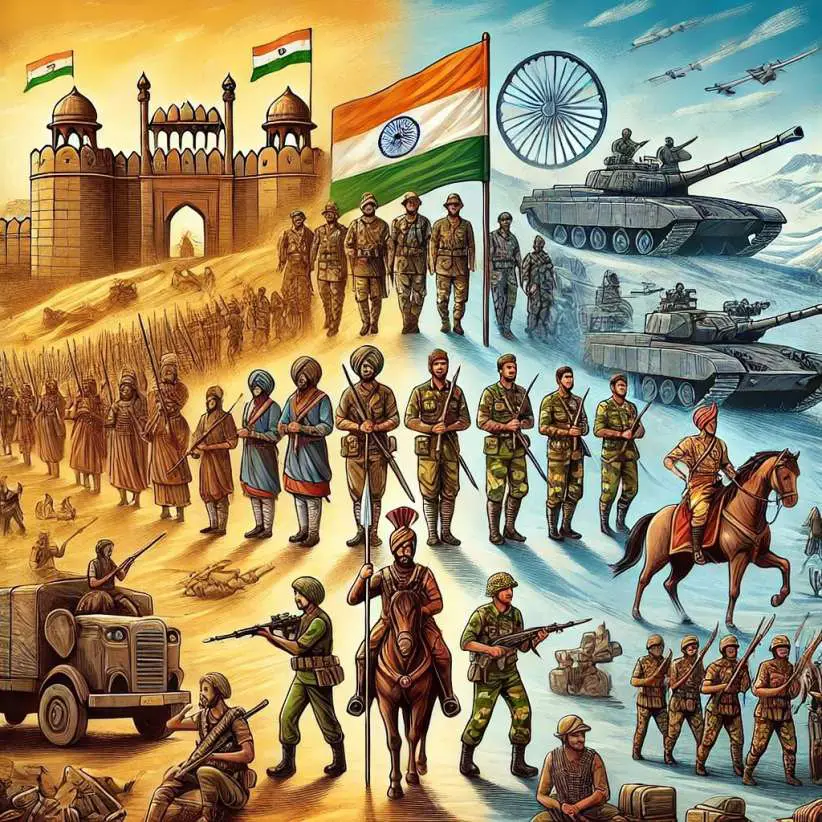Introduction History of the Indian Army
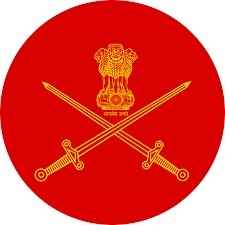
“In war, there is no substitute for victory” – These famous words by (Field Marshal Sam Manekshaw) perfectly describe the courage and strength of the (Indian Army). With more than 1.4 million soldiers, it is one of the largest volunteer armies in the world. The Indian Army is not just about bravery and sacrifice—it plays a crucial role in protecting the country and contributing to its progress.
Origins of the Indian Army
The story of India’s military strength goes back thousands of years. During the (Indus Valley Civilization) (around 3300 BCE), cities like Mohenjo-daro and Harappa were built with strong walls and defensive gates, showing early knowledge of protecting against enemies.
Later, during the (Maurya Empire) (322–185 BCE), India saw the rise of its first organized army. Emperor Chandragupta Maurya, with guidance from his advisor Chanakya, created a powerful and well-structured military. According to Greek historian Megasthenes, the Mauryan Army had 600,000 soldiers, 30,000 cavalry, and 9,000 war elephants, making it one of the largest armies of its time.
The military systems saw significant advancements during the (Gupta Empire) (320–550 CE), often referred to as the “Golden Age” of India. This period was marked by remarkable progress in the development of weapons and armor. One of the most notable innovations was Damascus steel, a revolutionary material used to forge swords renowned for their unmatched sharpness, durability, and strength. These swords became legendary for their ability to hold an edge and their superior quality, reflecting the era’s exceptional metallurgical expertise.
Role of War Elephants
One of the unique features of ancient Indian warfare was the use of (war elephants). These massive animals were like ancient tanks, used to break enemy lines and scare opposing forces. A special text called Gajashastra (The Science of Elephants) explained how to train and prepare elephants for war.
Why This History of the Indian Army Matters
The history of the Indian Army is not just about battles and victories. It’s a story of strategy, innovation, and resilience. From ancient civilizations to modern times, the Indian Army has been a key part of India’s journey. Understanding this history helps us appreciate the bravery and dedication of the people who have protected the nation for centuries.
Development of the Modern Indian Army under British Rule
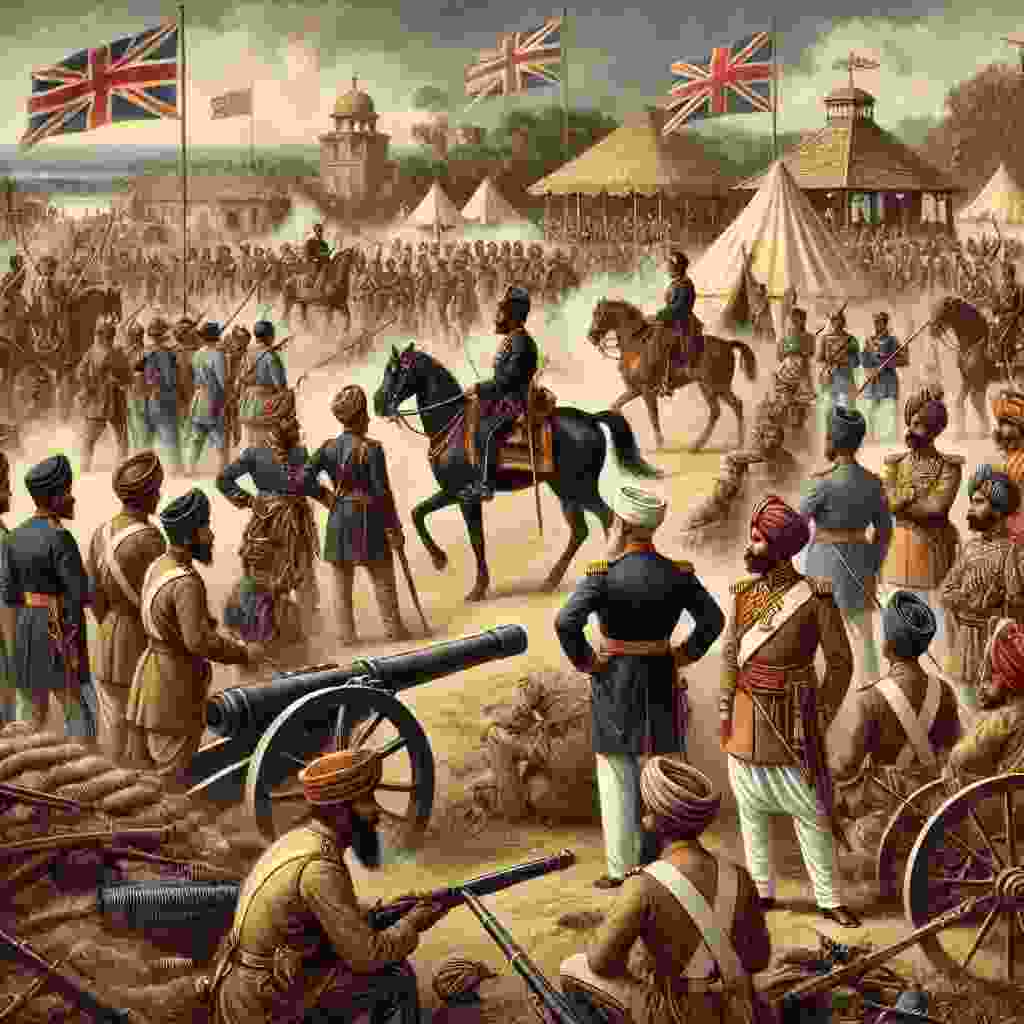
The foundation of the modern Indian Army was laid during (British) rule. This period transformed the army’s structure, strategies, and role in global conflicts. The British era can be divided into three key phases: The East India Company Army, The Revolt of 1857 and Its Aftermath, and The Indian Army’s Role in World Wars.
The East India Company Army
The (East India Company) created an army to strengthen its rule and protect its interests in India. This army consisted of a large number of Indian soldiers, known as sepoys.
- The Company’s army played a significant role in expanding British control over India by fighting in wars like the (Anglo-Sikh Wars) (1845–1849) and the (Maratha Wars).
- The army adopted European military tactics and training, laying the foundation for a modern military structure.
- However, the primary aim of the Company’s army was to serve British interests, not to protect Indian people, which later led to widespread discontent among soldiers.
The Revolt of 1857 and Its Impact
The Revolt of 1857, also known as the First War of Independence, was a major uprising against British rule led by Indian soldiers in the Company’s army.
- Indian sepoys rebelled due to harsh policies, poor treatment, and religious insensitivity, sparking a nationwide movement.
- The revolt showed the power and unity of Indian soldiers but was ultimately suppressed by the British.
- After the revolt, the British Crown took direct control of India, ending the Company’s rule.
Key Changes After 1857:
- The British reorganized the Indian Army to ensure loyalty.
- They increased the number of British officers and limited the use of Indian soldiers in key positions.
- Recruitment focused on certain communities like Punjabis and Gurkhas, who were considered more loyal.
- A strict divide was created between soldiers and civilians to prevent future rebellions.
Indian Army Role in World Wars
During British rule, Indian soldiers played a crucial role in (World War I) and (World War II), showcasing bravery and contributing significantly to the Allied efforts.
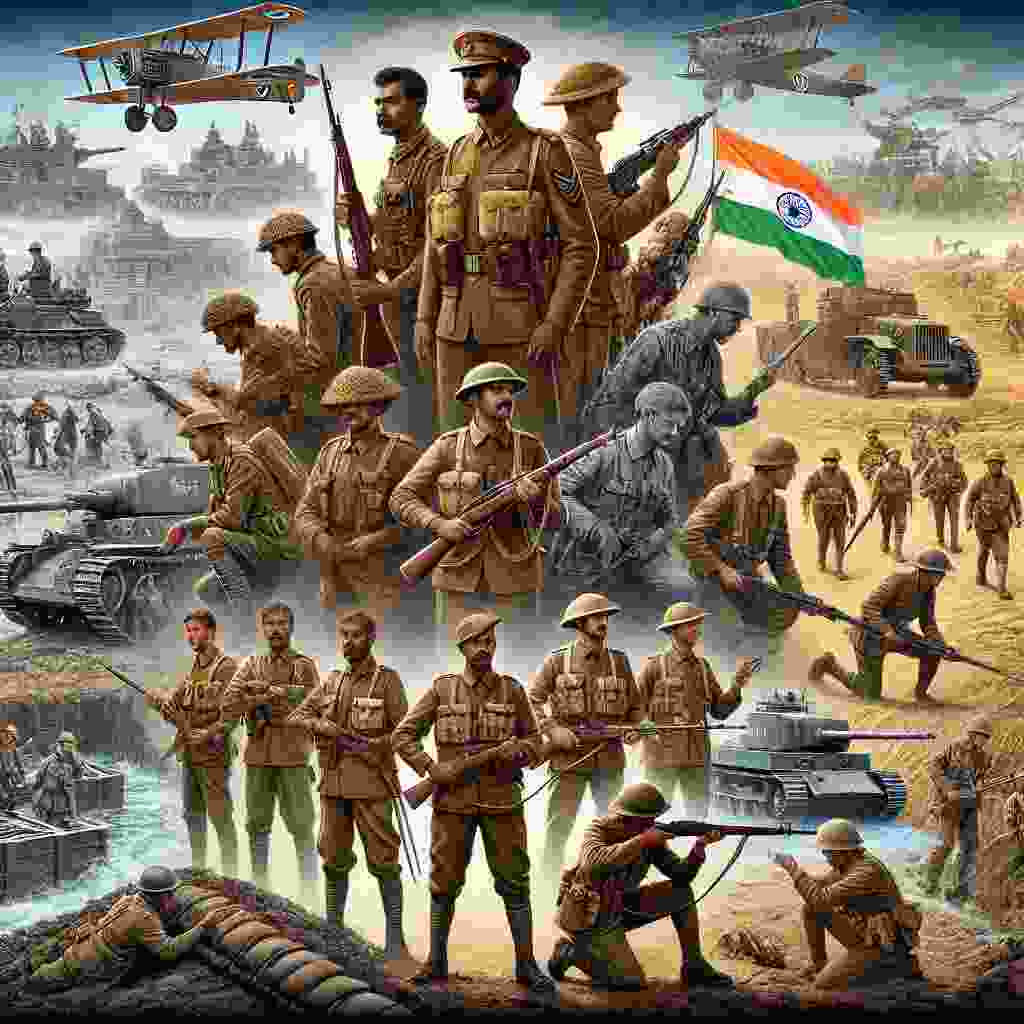
World War I (1914–1918):
- Over 1.3 million Indian soldiers fought in the war.
- They served in major campaigns like Gallipoli, Mesopotamia, and France.
- Despite their bravery, more than 74,000 soldiers lost their lives, and survivors were often denied recognition and equal rewards.
- The unfair treatment fueled the Indian independence movement.
World War II (1939–1945):
- More than 2.5 million Indian soldiers fought in Europe, Africa, and Asia, making the Indian Army the largest volunteer force in the world at the time.
- Indian soldiers were critical to the Allied victory in key battles.
- Meanwhile, Subhas Chandra Bose formed the Indian National Army (INA) to fight for India’s independence against British rule, inspiring many Indians to join the freedom struggle.
During the British era, the Indian Army evolved into a modern and professional force. While its structure and training improved significantly, it primarily served British interests rather than protecting the Indian people. Indian soldiers’ contributions in the world wars brought them global recognition for their bravery but also highlighted the injustices they faced, which fueled the Indian freedom movement. This period remains a significant chapter in the history of the Indian Army.
How the Modern Indian Army Was Born After Independence and Partition
The independence of India in 1947 was a historic moment, but it also came with significant challenges. One of the biggest tasks was the partition, which divided the country into two nations: (India) and (Pakistan). Along with land and people, the (Indian Army) also had to be divided, which was a difficult and emotional process. Despite these challenges, the Indian Army quickly adapted and started its journey as the defender of a free nation.
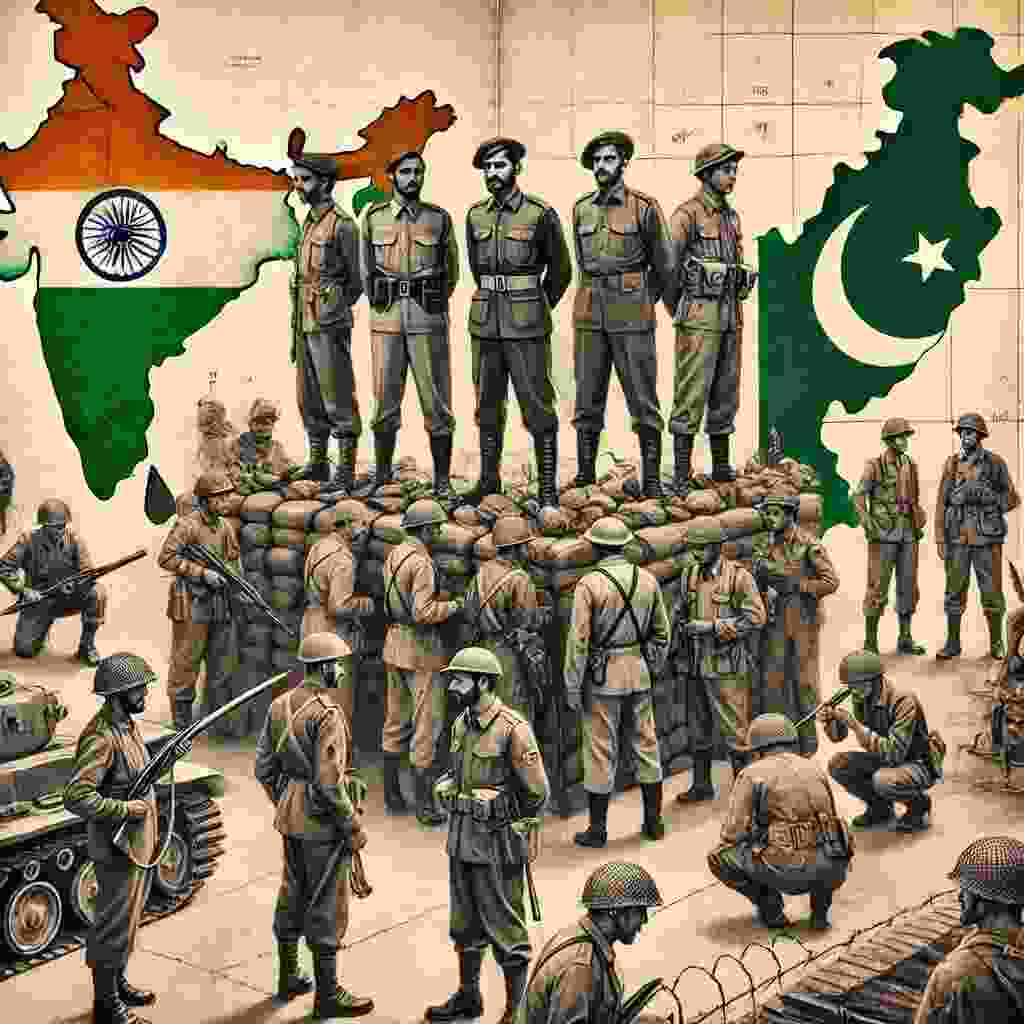
Partition of the Armed Forces
The partition of the Indian Army was a complex and challenging task.
- Division of Soldiers:
- At the time, the Indian Army had about 400,000 soldiers.
- Approximately two-thirds of these soldiers chose to stay with India, while the remaining one-third joined Pakistan.
- Many soldiers had to choose between the two armies based on their religion or region, which led to emotional and personal struggles.
- Division of Equipment:
- Weapons, vehicles, and other military supplies were divided in a 60:40 ratio, with most resources staying in India.
- Some military bases and facilities that ended up in Pakistan had to be replaced in India.
- Social and Emotional Challenges:
- The partition caused widespread displacement and violence, affecting soldiers and their families.
- Despite these challenges, the Indian Army reorganized itself to protect the new nation.
First Steps as an Independent the indian Army
India’s newly independent army faced its first major challenge during the First Indo-Pak War (1947–1948).
What Happened:
- After independence, the princely state of (Jammu and Kashmir) had not decided whether to join India or Pakistan.
- In October 1947, tribal fighters, backed by Pakistan, invaded Kashmir with the aim of seizing control of the region. This invasion triggered a conflict that would have long-lasting consequences for both India and Pakistan.
- The ruler of Kashmir, (Maharaja Hari Singh), asked India for help and agreed to make Kashmir part of India.
Indian Army’s Response:
- Indian soldiers were sent to (Srinagar), the capital of Kashmir, to defend it from the attackers.
- The army successfully protected key areas and pushed back the invaders.
- However, the conflict ended in 1948 with a ceasefire arranged by the (United Nations).
- As a result, part of Kashmir remained under Pakistan’s control, now known as Pakistan-occupied Kashmir (PoK).
Why This War Was Important:
- It was the Indian Army’s first major operation as an independent force.
- The soldiers showed great courage and skill, proving the army’s strength despite the challenges of partition.
- The war set the stage for future conflicts between India and Pakistan over Kashmir, a dispute that continues to this day.
The Indian Army’s journey after independence began during a time of great challenges. Despite the difficulties of partition, it quickly proved its ability to protect the nation in the First Indo-Pak War. This period marked the beginning of the Indian Army’s role as a strong and dependable force, ready to safeguard the sovereignty of a free India.
Post-Independence Indian Army Wars and Important Operations
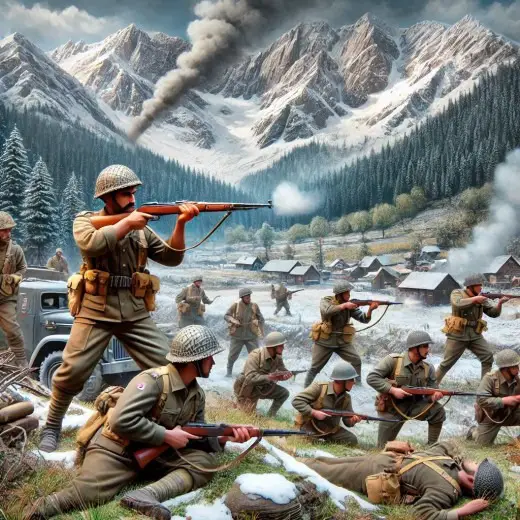
Major Conflicts
- Sino-Indian War (1962):
The Sino-Indian War was fought between India and China, highlighting the urgent need for India to modernize its military. Despite facing significant challenges during the conflict, the war served as a wake-up call, pushing India to strengthen its army, adopt new technologies, and better prepare for future threats. - Indo-Pak Wars (1965, 1971, 1999):
- The 1965 war between India and Pakistan was sparked by a dispute over the Kashmir region. This conflict tested the Indian Army’s strength and resilience. Although the war ended in a ceasefire, it highlighted the critical importance of the army’s preparedness, strategic planning, and ability to respond effectively to challenges on the battlefield.
- 1971 War: The 1971 war was crucial for India. India helped Bangladesh become independent from Pakistan. The Indian Army’s victory in this war was a major achievement and strengthened its reputation worldwide.
- 1999 Kargil War: This was a brief but intense conflict between India and Pakistan in Kargil. The Indian Army showed strong strategic planning and determination to take back the territory, winning the war.
Important Operations
- Operation Blue Star (1984):
Operation Blue Star was a military operation carried out to remove armed militants from the Golden Temple in Amritsar, a major Sikh religious site. Although the operation succeeded in achieving its objective, it led to significant political and social unrest across India, particularly due to the widespread anger and distress it caused within the Sikh community. - Surgical Strikes (2016):
India launched surgical strikes against terrorist camps in Pakistan-occupied Kashmir in response to cross-border terrorism. This operation showed India’s ability to take quick and strong action to defend itself against threats.
Modernization and Development of the Indian Army
Technological Advancements
The Indian Army has made great progress by using new technology and weapons:
- Advanced Missiles: India has developed powerful missile systems to strengthen its defense.
- Home-Grown Projects: The (Arjun tank) is one of India’s own modern tanks, showing the country’s progress in military technology.
- DRDO’s Role: The Defense Research and Development Organization (DRDO) has worked on creating drones, cybersecurity systems, and advanced radars to make India’s army even stronger.
Global Cooperation
India has worked with many countries to improve its defense:
- Joint Exercises with Other Countries: India regularly conducts military exercises with countries like the United States, Russia, and France. These exercises help the Indian Army learn new tactics and improve its defense strategies by working closely with other countries.
Since gaining independence, the Indian Army has grown into one of the most advanced and capable forces in the world. Through its experiences in wars and operations, along with its continuous modernization, the Indian Army has proven its strength and readiness to protect the country.
Contributions Beyond Borders
United Nations Peacekeeping Missions
India is a top contributor to UN peacekeeping forces, playing vital roles in stabilizing regions like Africa and the Middle East.
Disaster Relief and Humanitarian Aid
From earthquake relief in Nepal to flood rescue missions at home, the Indian Army exemplifies service beyond the battlefield.
Legacy and Cultural Impact
The Indian Army’s legacy permeates Indian culture, from patriotic films like Border to annual traditions like the Republic Day Parade. Its values of discipline, courage, and sacrifice inspire millions.
Conclusion
The Indian Army’s journey is a testament to resilience, adaptability, and patriotism. From ancient battlefields to modern missions, it has continually safeguarded India’s sovereignty and contributed to global peace.
More Information Click Here
